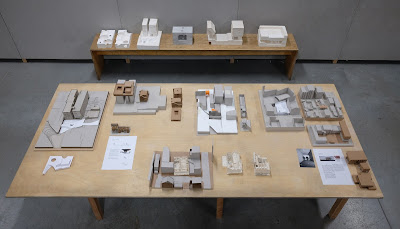Following critical analysis of Dalstons' multi-layered urban fabric, students have developed individual briefs and building programmes during last term. Currently they are working on the first architectural proposals that attempt to anchor existing activities of local organisations and community networks. Those are seen as alternative strategies of spatial production and as a response to increasing pressures on local communities caused by effects of rapid urban transformation and predominant commercial spatial production.
What became clear during the constructive debate at the Open Studios Event, is that interventions to the different project sites will require a combination of both strategic and architectural thinking. An approach that understands architecture more as an adaptive condition, a kind of hybrid. (the opposite of architecture as an idea of static entity or singular typology).
A key quality observed within Dalston derives from an understanding of space that is shared by a multiplicity of different networks and user-groups which necessitates co-existence and overlap: A kind of porous condition and testing ground enabling various forms of social, cultural and entrepreneurial experimentation. Proposals will need to make provisions to enable this phenomenon to continue.
While the permanent parts of the proposed architectural interventions
will establish a new "fixed" and permanent spatial condition, the
question is how projects sites can maintain critical opportunities for
the informal, experimental and adaptive use at the same time?
Many thanks to all guest critics, especially Heidi Moxon and Moto Auraa Kawakami.




